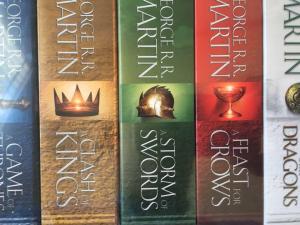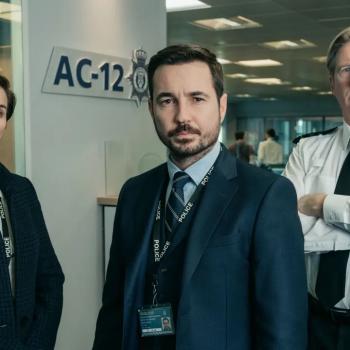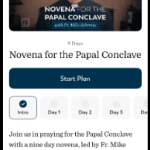
Game of Thrones, the TV adaptation of George R.R. Martin’s A Song of Ice and Fire, recently finished filming—forever. The eighth and final season is supposed to air “sometime in 2019,” but a date has not been set. Rumors last winter that it would premier on April 14 have been debunked.
So, if—strange though that may be—you are a newcomer to all things Westerosi and you want to give the story a try, you have plenty of time before the next season begins, even if next April turns out to be true. At 77 episodes, a few lasting longer than an hour, you can easily knock them all out. And you should also read the books. Five have been published so far. The final two should be coming…any time now. Soon. Maybe next year. The point is, learn this story.
“But I don’t like fantasy.” Thanks for sharing. But if it comes to that, it doesn’t matter. Fantasy is only a vehicle to tell a story. But then again, who said this is fantasy? ASOIAF/GoT is a story of politics, betrayal, loyalty, revenge, love, corruption, hate, hubris, and cruelty. And redemption. Yes, there are dragons and swordplay; and there is magic. And terrifying, supernatural creatures that threaten civilization. But to dismiss ASOIAF/GoT fantasy is to miss the point. It is a story of human beings, all of them flawed—some severely flawed—but all of them characters you come to know and care about. Maybe even love. A good story, well told, always trumps genre. If you don’t like fantasy, it hardly matters. All that matters is that you like stories.
A Song of Ice and Fire and the HBO series begin with House Stark, whose motto is, “Winter is coming.” The Starks are wardens of the North—the northernmost region of the Seven Kingdoms that make up the continent Westeros. Alone of the noble families in Martin’s fictional world, their motto is a warning, not a boast or a threat. It is also a weather forecast. Winters in Westeros last years, sometimes decades. And early in the first book, word comes from the Maesters: winter is coming, and it will be a long one. Then the king is murdered. A lord is betrayed and also murdered. What follows is a free-for-all war over who will sit on the Iron Throne and rule the Seven Kingdoms.
That is the plot. But A Song of Ice and Fire also is the story of the systematic destruction of the Stark family and the surviving members’ futile attempts to put it back together. The family’s enemies, driven by envy and greed, seek to kill or humiliate them. The parents and children are scattered across Westeros, their efforts to reunite thwarted again and again. Meanwhile, power in the realm passes to people consumed by self-serving hubris. With a winter approaching that looks to be the longest and coldest in millennia, five armies roll over the Seven Kingdoms, razing villages and holdfasts, slaughtering peasants, and laying waste to a fertile countryside. When, at the end of A Feast for Crows (volume four), Jaime Lannister wakes in the middle of the night to snow falling in the Riverlands—the breadbasket of Westeros—he understands, but too late: “Winter is marching south, and half our granaries are empty. Any crops in the field [are] doomed. There will be no more plantings, no more hopes of one last harvest.”
Jaime sees the coming famine. But while he and the rest slaughter each other over a piece of furniture, a worse horror approaches from the far North: an enemy they all dismissed as myth. And it brings the winter.
A Song of Ice and Fire is heavily influenced by medieval European history, but two chief inspirations are Hadrian’s Wall in northern England and the Wars of the Roses. Start watching and reading, and you’ll see why.
I argue that it also is something of a sequel to Tolkien’s The Lord of the Rings, at least thematically. Gandalf, near the end of The Return of the King, tells Aragorn, “The time comes for the Dominion of Men, and the Elder Kindred shall fade or depart.” A Song of Ice and Fire, with all its brutality and cruelty, is the Dominion of Men—without the leavening influence of elves or wizards. The imaginative reader will find other possible connections: an almost extinct, diminutive people called the Children of the Forest who could be the last of Tolkien’s elves, “[dwindled] to a rustic folk of dell and cave, slowly to forget and to be forgotten.” There is a sidekick named Sam, and a protagonist who is dismissed by everyone because of his stature.
Martin’s series meanders into multiple subplots and a dizzying array of characters. The HBO adaptation pares it down quite a bit and, especially in later seasons, takes some storylines in significantly different directions. Unique among film or TV adaptations of beloved books, the series has outpaced the published works: the last two volumes of A Song of Ice and Fire still have not been published. Martin, a notoriously slow writer, promises that volume six may come this year, maybe next, or the year after that.
Whatever characters or subplots got cut in the adaptation, the beauty remains. How can a knight named “the Sword of the Morning” not stir the imagination? Who cannot be moved by the sound of baby dragons singing, or the oath taken by brothers of the Night’s Watch: “I am the sword in the darkness. I am the watcher on the walls. I am the shield that guards the realms of men.” And who cannot love how the name “Targaryen” sounds as it rolls off the tongue?
Start watching Game of Thrones. Try the first season, at least. It’s ten one-hour episodes, only a small investment of your time. I think you’ll like it, and that you’ll want more. But to really know and love the story, as I said before, read the books. You have plenty of time to finish all five volumes before season 8 airs, whenever that is, starting with the first volume, A Game of Thrones.
Welcome to the Seven Kingdoms.















